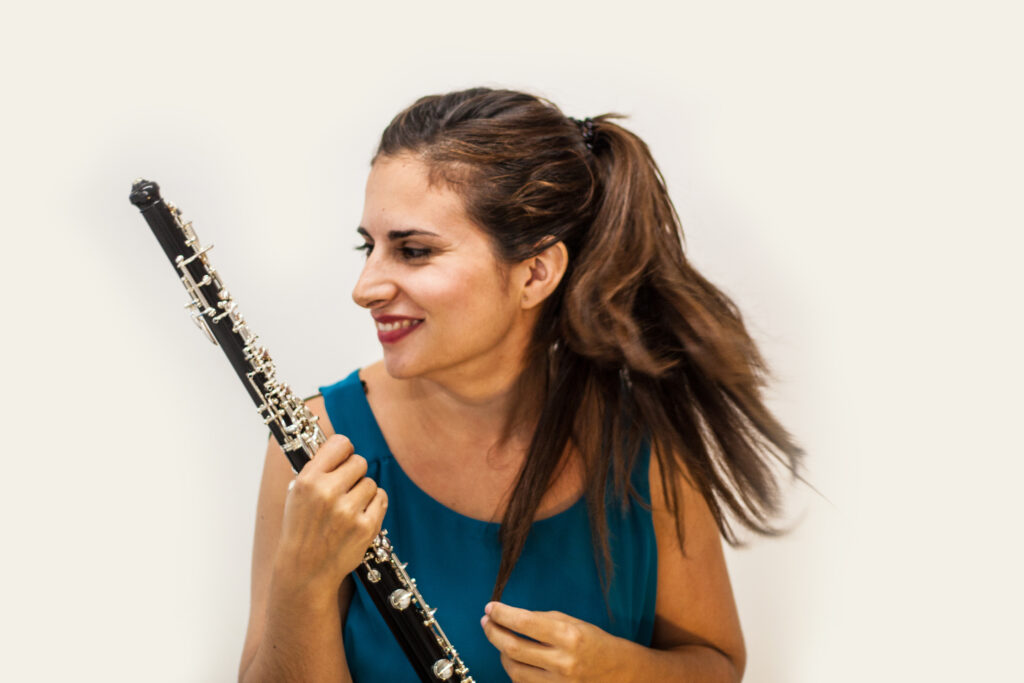8 Tips to choose Oboe Reeds

Hi everyone, how are you? Welcome one more day to the Blog of MusicBayside Oboe.
My name is Nuria Cabezas and today I have prepared a post in which we will learn how to choose and try oboe reeds.
Tips and tricks to make a good selection that covers our personal needs and priorities.
Tip 1: Tied
We must pay attention to the fact that the thread of the reed covers exactly the length of the staple and that the reed doesn’t lose any air. If the measure of the staple is, for example 47mm, the last row of thread must correspond to that measure and never exceed it because that fact would drown the reed.
To see that the reed does not lose air, we make the following verification:
We observe the reed on the sides and check that both parts of the wood fit perfectly one to the other.

Another way to verify that the reed is tied straight with respect to the staple is to look at it from the end of the staple, with one of the eyes closed. The image that we must see is a circumference crossed by a horizontal line, corresponding to the opening of the reed. If the line we observe is not totally horizontal, the ideal would be to tie that reed again.


Tip 2: Vibration
The reed should be able to vibrate, check this point by playing only the reed as follows:
The sound we should hear is a snore.

Tip 3: Answer of the reed in the different registers
Another fundamental aspect is to test the response of the reed in the registers low, medium and high. It must work for all of them.
Tip 4: Stability
One trick that I like to check is the stability of the reed. For that we need to pay attention in how the octave change occurs between the notes A4 and A5.
Without making big changes in pressure and embouchure see the tuning and ease of the emission in the octave change.
Tip 5: Tuning
Tuning is one of the most important issues. We must verify that the tuning of the reed is stable in each of the registers, checking the notes one by one. For this we will use a tuner.

Tip 6: Sound balance between registers
We will check at this point that the sound volume is balanced between registers, avoiding a big difference between the low and high registers. Because normally is huge in the low and tiny in the high register.
Tip 7: Articulation
We will check basic articulation as legato, staccato, portato, etc. Ideally, the reed would work for all of them.
Tip 8: Proper hardness for us
Playing with reeds that are too strong or too soft for us can be really painful. It is very important to find the point of hardness that allows us to be able to play relaxed and, at the same time, to be able to count on stability in support.

Share the post if you like it and Subscribe to the YouTube channel to be aware of all the news, there will be new videos every week!!
You can find more exercises and tutorials as well on the website www.musicbayside.com where all the digital content is available and also you can subscribe to the Newsletter to be aware of all the news.
You can follow me on my social networks like Facebook, Twitter and Instagram.
And in the the website MusicBayside you will find information about how to get lessons and personalized attention. You can also contact me by email at mail@musicbayside.com.
Have you hear about Patreon? If you like the content I’m creating in MusicBayside and you want to support my project with a monthly donation starting at 1$, you can visit my Patreon page www.patreon.com/musicbaysideoboe, where you can find all the information about it!

If you want to see the full video about the 8 Tips to choose Oboe Reeds, you can find it below:



